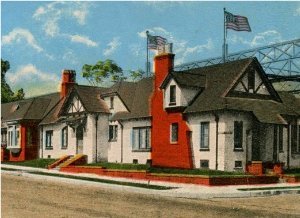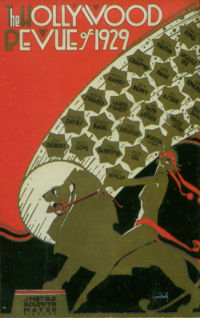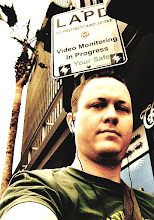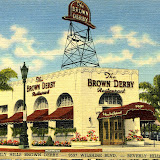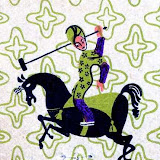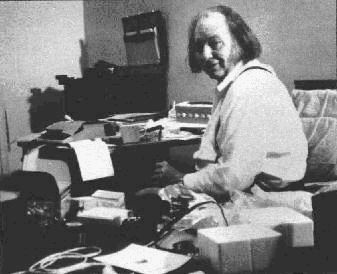It ought to be possible to write sanely about the morals of Hollywood. Itwill be well to keep in mind the purpose of the slightly bewildered butresolute statesman who said "I will go to the end of the road, let the chipsfall where they may." Recollection of the well known limerick may also beuseful: "Said the Reverend Jabez McCotton, 'The waltz of the Devil's begotten.' Said Jones to Miss Blye, 'Don't you mind the old guy; To the pure almost everything's rotten.' " I went to Hollywood, to find out the truth, good and band. I talked withactors, directors, producers, screen writers, extras, merchants, doctors,ministers, bankers, detectives, performers, extollers, denouncers, newspapermen and women, publicity men, housewives, onlookers, lenders, spenders andothers of high and low degree and varying standards of veracity. I sat withthe heads of official agencies investigating the Taylor murder, the traffic innarcotics and bootleggers.

I watched movie people at their work and theirfrolics. I went without instructions except to get the facts and without otherattitude except that of reporter. In the minds of many persons who have read of the "Arbuckle party" in SanFrancisco and the Taylor murder in Los Angeles there has been created thispicture: Hollywood, the motion picture capital; a community of dissolute actorsand actresses and others of the movie industry; the worst of them unspeakablyvile, the best suspicionable; a colony of unregenerates and narcotic addicts;given to wild night parties commonly known as 'orgies'; heroes of the screenby day and vicious roisterers by night; a section of civilization gonerottenly to smash. For comparison to the profligacy of Hollywood the critics go back to Tyreand Sidon and Rome; to Alexandria, Herculaneum and Pompeii, to the laterCaesars, to Nero and Caligula; to the Herodian courts of Judea; to Belshazzarand Alexander. The sorriest historical procession is conjured. Hollywood, which had never thought of itself in quite that light, laughsmerrily at first, as the accusation is echoed back from the East. Then,compelled to believe that a considerable part of the public is taking theindictment seriously, it soberly sets about preparing its defense. What is the evidence as to "orgies," narcotics, alcohol, vice,extravagant living? I shall tell in sequence whatever I was able to find out.But just before the plunge the heartening fact comes to mind that a littlewhile ago the residents of Beverly Hills assembled to discuss the laying outof a polo field. Beverly Hills is part of the "Hollywood district," an"exclusive" part, where Douglas Fairbanks and Mary Pickford, Charles Ray, WillRogers and many other stars live in sequestered comfort. When it was Rogers'turn to speak he said: "Folks, I've sort o' been looking over this corner of the world, and itdoes look as if there are some mighty pretty places for a polo outfit. But Ialso noticed another thing, and that is there is no church in Beverly Hills.Now, it probably would do my kids and me a lot of good to dress up and get outand play polo, but I figure it would be just as well if we attended to thischurch business first. I move you, Mr. Chairman, that we go ahead and raisethe money, but spend it on a church instead of a polo field. I can chip in$500, if that's agreeable to you all." And those motion picture people gave awhoop at the brilliancy of Will Rogers' suggestion, and as soon as thearchitect gets his plans drawn that church will begin to materialize. There is some truth in the stories of wild "parties" in and aboutHollywood. Those who have attended them contend that they have been no worsethan similar things indulged in by persons of the same moral stripe in otherparts of the country, notably New York. But of such stupidly disgustingconduct I never have heard. These "parties" virtually ceased after theArbuckle affair in San Francisco. Their participants were a relatively smallnumber of men and women, members of overlapping circles of movie parasites andoccasionally a real star. The leading figure in several of them was acomedian, not now active, who mentally and morally never has risen above hislow beginnings. His popularity with the public enabled him to earn a greatdeal of money. He spent it as such a man might be expected to spend it. He wasgenerous and acquired a reputation in his set as a prince of hosts. A flock offlatterers gathered around to help him get rid of his salary. He gave partyafter party of the same general type, some of them reaching their climax ineverybody getting drunk, some going indescribably further. An investigator whose word I have no reason to doubt told me he haddefinite evidence of four of the more extreme parties. Three of them werestaged in Los Angeles hotels, the fourth in a private residence in Hollywood.The first one brought together ten men and ten women. Some of them were drugaddicts. Liquor was provided by the host for everybody, and morphine andcocaine,

with hypodermic syringes, for those who craved them. The second "party" of this type was held, the investigator told me, inthe Hollywood home of an actor. It lacked one bad feature, but included allthe others, and in addition some of the more intoxicated revelers disrobed ansthey danced. This was a large gathering--more than 100 persons. Nearly allwere disreputable and so regarded by the others of the Hollywood community.The third and fourth entertainments were not essentially different from theothers. The same investigator told me there had been bathing parties on thebeaches at which some of the "ladies and gentlemen" who had forgotten to bringtheir bathing suits were not prevented from going into the water comfortably.I have heard of a similar exhibition not twenty miles from New York. Scandalous stories may be heard in Hollywood and Los Angeles by any onewho cares to listen. On this trip it was my duty to listen, but I do notpresent on this page as a fact anything which is merely hearsay. One of thestories I had read pictured a handsome and popular film actor as puncturinghimself in the stomach with a hypodermic needle at the peak of an excitingdinner attended by "stars" and crying "This is the life." Most of the personsI met had never heard of this incident, although some of them believed theactor in question was a morphine user. [1] The only person I found who professed to know the truth of this tale wasa newspaper man. He said he had attended the party and had seen the incident.But a veteran of Hollywood who has watched the stars blaze up and die down andhas kept pretty close watch on them and their habits said to me: "I wish you'dtell me who this newspaper man is and I'll find him and tell him that he's notonly a liar but a blank-blank one." It may be mentioned here that I met in Hollywood several friends whom Ihad known for years. They are in the best position to know what is going on.They are the sort of men who, despite their connection with the pictureindustry--or art--might be expected to tell me confidentially whatever secretsof public interest they knew, just as I would tell them if they came to NewYork. But the fact is that these learned and agreeable gossips did not believeone-thousandth part of the stories in circulation and were ready to fight atthe drop of the bat to demonstrate the falsity of these tales. Theirsolicitude lest I should prove gullible was touching. And some of the darkmysteries of Hollywood that I had occasion to ask them about they had neverheard of at all. They told me so, and I believe them. Now as to drugs, are they in common use in Hollywood? No. I looked intothis question with special care and learned: The larger cities of California are cursed with an extraordinary numberof peddlers of opium, heroin, morphine and cocaine. The Chinese brought thefirst opium to the West coast, and many Californians acquired the habit fromthem before the East heard of it and before alkaloids were used at all.

Drugsare smuggled into San Pedro, the port of Los Angeles, by Japanese, Chinese,British and other vessels. They also come over the border form Mexico anddown from British Columbia and the northwestern ports of the United States.Much of it also is manufactured in Philadelphia and St. Louis, exported toMexico in ostensibly legitimate traffic and smuggled back to the UnitedStates. The Government and State anti-narcotic agents are absurdly inadequate innumbers. The Government did not have any agents in Los Angeles speciallyassigned to this work until two months ago, when two were sent from the East.Their investigations included an order to look into reports that drugs werebeing sold at motion picture studios. These agents have been trying to getevidence of "snow parties" as the gatherings of drug addicts are called, inHollywood and Los Angeles, but have not yet succeeded. "Snow" is the modernunderworld name for cocaine. Addicts speak of taking a "sleigh ride." Theonly actress to whose door the Federal men have traced forbidden drugs is notin the pictures but in vaudeville. They thought they had a good clew whentold of a railroad conductor who had been invited to attend a "snow party" atthe home of the director of a low grade movie company in Hollywood. Theconductor went to the party in his ordinary Sunday clothes. He found theother guests and the host in pajamas. They tore off his collar and coat, butwhen he said that was enough they let him alone. There were plenty of opium and pipes in the house, and a Chinese was"cooking" for the smokers. None of them was a movie headliner. The conductorwas not interested in things. He went upstairs and won $600 in a poker game. "There really are a good many drug addicts in the motion picture crowd,"an agent of the Department of Justice told me, "but most of them are among thelow class, roustabout actors, and the extra people who are not workingsteadily but call themselves actors. However, the stories have been wildlyexaggerated. And don't forget, young man, that New York has its dope fiends,too." A good many "extras" have been arrested as addicts at the instance of theCalifornia State Board of Pharmacy. A few years ago an officer of theDepartment of Internal Revenue having said there were 8,000 addicts in LosAngeles a narcotic clinic was established and maintained for a year, but thelargest number of patients registered at one time was 300. A peddler arrestedby the

State board said he had sold cocaine to one of the fairest and mostprosperous of screen actresses. No one else has accused her. The Los Angeles police have two detectives on the narcotic detail. Oneof them, who appeared to me both honest and intelligent, told me that not onein fifty of the city's addicts lived or worked in Hollywood. He also told meof a high salaried, dashing movie star who reported to the police that apeddler was stealing the stuff that dreams are made of into one of the finestHollywood studios. The star and his valet helped the police set a trap forthe peddler and catch him. This recital was hugely interesting to me for onthe preceding day I had been assured that this same star was himself an addictand his abdomen pitted with needle marks. Some of the studio managements have paid no attention to rumors thatdrugs were being sold on or about their premises. Others are alive to thisdanger. One studio gave the police the address and telephone number of awoman listed as an "extra." She was sent to jail as a peddler of cocaine.She had been a cabaret entertainer and had done "bits" in pictures from timeto time. "She claimed to be an important actress, but was a bum," was mydetective's appraisal. A tip from the wife of a scenario writer enabled the police to round up acoterie of peddlers in a Los Angeles poolroom. A year and a half ago theUniversal studio caused the arrest of a dispenser of morphine. He had hungaround the studio, caught on as an "extra" and the moment he got past the gatebegan looking for customers among his fellows of the small fry. He went tojail and his wife divorced him. Cocaine is sold in Los Angeles in "bindles." A "bindle" is done up inwaxed tissue, just like a drug store powder, weighs from two to two and a halfgrains and sells for $2 or $2.50. Some of the peddlers work on commission--50cents a bindle--others buy their stock outright from the wholesaler. In theirunwritten code "eight pieces of iron" or of candy means eight ounces ofcocaine or morphine, and "harmonica" is heroin. "Stories of 'snow parties' in Hollywood are vague. People call us up butdon't give names or addresses. Personally I think all the 'dope' about 'dope'is exaggerated. It's the Mexicans and negroes who bother us, not the moviefolk. A while ago we thought we had a good one when we heard of 'snowparties' in an old country house in Hollywood which had been rented to a countand sublet to others. The stars were supposed to gather there every night andhave a 'sniff' or two. We spent three or four nights around the house. Therewere parties there, but it was only a mess of bootleggers." In certain published accounts of high jinks in Hollywood marijuana ismentioned as one of the drugs consumed by the insatiate performers. Marijuanais Indian hemp, sometimes called Mexican weed. It grows wild over much of theSouthwest as ragweed, which it resembles, does in the East. Its seed is soldfor birdseed. If the Californian has no back yard he can buy a quarter of anounce of birdseed and raise enough marijuana in a window box to inspire athousand bandits. The Mexicans mix the dried leaves with tobacco and smokethem in cigarettes. The effect is inflammatory stimulation. The marijuana excites the nerves, deadens fear, turns a coward into aswashbuckler, accentuates evil propensities. It does not soothe or producepleasant dreams, and is scorned by the whites. Some cowboys have picked upthe habit from the Mexicans, and whatever use is made of marijuana inHollywood is restricted to punchers and peons. Before leaving the subject of drugs it should be pointed out that noprominent motion picture actor or actress has ever been arrested as an addictso far as I know. This merely is worth passing mention. The ready, ofcourse, knows that addicts who are well up in the social or professional scaleare seldom arrested anywhere. Does any one recall such an arrest in New York?

Of much greater significance is the fact that even in the "inside" gossip ofthe California movie zone the number of well known players suspected ofaddiction is very small. Wherever I went I asked, "Who are these dope fiendswe've been reading about?" Of the names given me by more than two persons thepublic would recognize only five. One of these was that of the handsomematinee idol heretofore mentioned. The others were women. There are in theHollywood district when the studios are booming, which is not the case now,about 3,000 professional actors more or less regularly engaged, in addition toa swarm of extras. About 100 of these are stars or featured performers whosenames sparkle in electric lights everywhere. Only five of the 100 wereseriously mentioned as addicts even by lovers of scandal, and the only oneconcerning whom first hand testimony was offered was that of the screen herosaid to have been seen jabbing himself with a needle. I admit that I was an outsider in Hollywood but I do not believe that any"dope cult" exists among the well known players, and am sure that the greatmajority of them have the same horror of narcotic drugs as other normalbeings. And, by the way, it seems to be pretty well established that WilliamDesmond Taylor, the director who was murdered, was not only trying to get afamous actress to give up morphine but was fighting a group of peddlers whowere smuggling drugs into one of the Hollywood studio inclosures. He hadcaused one of the peddlers to be beaten almost to death at this studio. Mostof the drug users are among the low grade extras, certain small comedycompanies and a gunman type of hired hand. There has been until recently noconcerted effort of the producing managements to stamp out the traffic. I was told by the Los Angeles police that such an effort now is underway. I might add here that a Hollywood physician who gave me a closeup viewof the community as he saw it said that within the past year he hadencountered only three addicts. Two were girls, both "extras." The other wasa man, a relative of an actor. The Rev. Neal Dodd, an Episcopalian pastor,who is a sort of movie chaplain and is to have charge of a Little ChurchAround the Corner to be built in Hollywood, said he personally knew of onlyone "dope case" involving an actor. So much for narcotic drugs. Next alcohol. This topic can be dismissedwith a few words. California under prohibition is one of the wettest States.Liquor easily is procurable in every large community, including Hollywood. Inparts of Los Angeles it is sold openly, notably at soft drink counters. Itcannot be bought openly anywhere in Hollywood, which always has been asaloonless town and is now. An old timer said to me, "My daughter, 15 years oldhas never seen a drunken person." The homes of Hollywood are stocked with liquor in about the sameproportion as elsewhere. Every thirsty burgher has his list of bootleggers'telephone numbers. He swaps telephone lists with his neighbor, just as he usedto trade home brew recipes. He phones his order to the bootlegger and thestuff is delivered at the back door. The prevailing poison is synthetic gin at$8 a quart. There also is California wine to be had in any quantity,prohibition having at least doubled the price of the grape growers' product.Grapes may be bought in season by the pound or the ton. Unfermented grapejuice is sold by the three gallon jar for $5 the jar, I believe. A friend toldme that three parts of water added to the juice produced, after an intervaland without any attention whatever, the rarest burgundy. How this excitingmutation is accomplished I don't know, but that is what he said. There is muchdrinking in Hollywood. Most of it is in the homes of movie and non-movieresidents. Many homes are abstemious. Douglas Fairbanks and Mary Pickford areamong the abstainers. They serve no liquor in their home except at formaldinners. An alcoholic cross section of Hollywood presents no phenomena not to befound nowadays in other communities East and West, with this exception: Myimpression is that movie people, taken collectively, have in the past givenand attended more "booze parties" than most other communities of the samesize, and that reckless indulgence has been more frequent. Hollywood probablywill dispute this. Anyway, we can agree that since the Arbuckle explosionthere has been a slowing up all around. Another count made against Hollywood is that girls who try to enter themovies or to advance in their profession are subject to the moods ofunscrupulous directors and even of "magnates." I asked one of the bestinformed and frankest of men what truth there was in this. "I'll tell you," he said, "how the motion pictures got a bad name. Theyhave come up, you know, rather chaotically, from nothing in a few years. A fewyears ago the stock company was dominant. It put on cheap pictures costingfrom $5,000 to $25,000, and ground out a picture in two or three weeks. Eachstudio had a large number of employees earning from $5 to $150 a week.Sometimes there were as many as twenty-five directors in one studio. Theprofession of director was a new one. Some of these were men of bad characterbut with a knack for this game. They got into the habit of telling actressesthat in order to become better actresses they needed emotional experience. Thenext suggestion was, of course, that the director could help supply thisexperience. "I know of girls who were tricked by this sort of fraud, and the truth isthat some of them really did become stars. But as the new type of picturedeveloped the stock company passed. The director no longer is all powerful. Inthe next phase the little tin king was the star. He picked his own company. Ifhe were a rotter, as some stars have been, he selected his women according totheir complaisance, and it is only fair to say that some of them wereexceedingly complaisant and evidently came to Hollywood with the intention ofthrowing themselves at the first man they met who could give them rank in thestudios. "Now that phase is passing or has passed. A new functionary, the castingdirector, has appeared. In the selection of the cast he is supreme. He hasnothing to do with the players before the camera. He merely selects them. Hestays in his office. In most of the studios he is a fine type of man. Thedirector on the lot must use a woman in the role to which the casting directorassigns her. In the course of a year an actress may work under a number ofdifferent directors. No one of them has dictatorial power over her. "And the caliber of the directors is improving all the time.

My judgmentis that at the present time if a girl at the studios is led astray it islikely to be her own fault. You will hear the opposite view expressed, but donot ignore the fact that many a girl who went to Hollywood to make her fortuneas a star and has had to go home because she has no talent has, to save herface in her home town, told the neighbors that she fled that awful Hollywoodrather than submit to a wicked director. "There is no question that some of the well known stage people who werebrought here a few years ago 'raised the deuce.' They could not get over theidea that Hollywood either was a one night stand or a pleasure resort with thesky as the limit. The natives, watching their carrying on, exclaimed: 'Sothese are actors! God save the mark!' The 'joy rider,' the profligate fool,always is under observation, while the silent, decorous majority is ignored.Well, the irresponsible director and the small minded actor were what gave themotion pictures a bad name in southern California. But I have watchedHollywood a long time, and am convinced that it is steadily improving, despitethese occasional wild splurges we read about. Most of the bad ones were badwhen they came here. "The bad ones flock together as affinities do everywhere. Everyexperienced observer knows the source of the trouble that recently has comeupon Hollywood. One of the comedy concerns is rotten and ought to be blottedoff the face of the map. But the estimate that not 200 members of the 'fastcrowd' are actors, actresses, or directors is accurate. No census has beentaken, but I should say there are about 3,000 actors in the studio district. Imean stars, leads and those who play small parts. The extras are as the sandsof the sea and many of them just as shifty. In boom times they gather around,in slack times they go back to the foundry or wherever they came from. Thebody from which the working extras are drawn numbers from 8,000 to 15,000persons. About 150 of them are ex-pugilists. When the studios are busy theywork as rubbers and extras; otherwise they are absorbed in the mass. Living issomehow easy for their kind. "Among the extras are many decent and thrifty souls as well as many weakand shiftless. They are just such humanity as you might think would beattracted to the pictures. For a period of twenty months I carefully checkedall the newspaper stories of 'movie actresses' arrested for misdemeanors.Often they were headlined as 'movie stars.' The fact was that not one of themwas even a player of small parts. They were comedy girls and extra girls. Whenarrested, all said they were actresses." While in Hollywood I also looked into the matter of divorce and informalalliances. A long list of conspicuous players who have not been divorced andwho have no intention of being so was recited. A very able man who in the pasthad been a police reporter in New York and other cities as well as smallertowns testified that there was the least open immorality in Hollywood of anyplace he had known. Another observer thought there was a greater percentage ofcouples living together without being married than he had found to be the caseelsewhere, except, possibly, in New York. But as apparently everybody in thepicture fraternity knows who these couples are, this situation would seem tobe exceptional in Hollywood, as elsewhere. A certain director who has had a succession of women friends devoted tohim is notorious because of that fact and is avoided by some of his formerfriends. In the better circles of moviedom he does not show his face. On theother hand, an actor and an actress who make no secret of being more thanfriends are received socially because they are rated as "on the level." Theyare introduced at parties by their individual names, and no questions areasked. Liberal as may seem the social code of a community which regards theother fellow's private affairs as strictly his own business, it does notcountenance disloyalty in the common law relations. A woman succeeded in driving out of Hollywood a man who had cast aside afriend of hers. A baby came to another pair, who were married after one ofthem had secured a necessary divorce. The mother, who had not been a Puritan,not only gave up drinking and profanity, but began giving humorous curtainlectures to her friends who came to the house. She told them she was not goingto have her baby associating with "wild women." With the help of the baby, shebettered the standards of propriety throughout her social circle. Even those who accuse Hollywood of being a "Roaring Camp" must admit thatit has its little "Lucks" as well as its "Sals," and when the recording angelgets around to the movie town will he not remember them. The divorce register of Hollywood is formidably long, but the divorcecenter of the United States, as a certain author pointed out, is in the MiddleWest, not California. At the risk of offending stage people it must be saidthat they seem to be more generally tolerant of divorce than others. That isthe case among the motion picture people. The average view is that divorce isan evil but not necessarily a stigma. If two persons can't get along together they are not criticized for theact of separation. All depends on the circumstances. Divorce rarely isquestioned in Hollywood except when one or the other of the persons involvedis believed to have been badly treated. The most notably example of playerswho have been divorced and remarried are Douglas Fairbanks and Mary Pickford.In Hollywood one hears no breath of scandal concerning them. They had theirreasons for doing what they did; they are deeply in love with each other, theybehave themselves and that ends it. This is the Hollywood view. One wonders to what extent Hollywood realizes how strange its notionsseem to the "good church people," or to small town people generally, whoconstitute most of the audiences in motion picture theaters. I heard of asmall town, old fashioned, old lace and lavender mother who visited a relativein Hollywood. The relative asked her what she'd like to see. "I do not want tosee Mary Pickford," she said emphatically. "There's been so much in the papersabout her divorce!" And yet many good people of Hollywood look up to Mary notonly as a leader of their profession, but all that a woman should be. In theface of such conflict of views, you see, it is not the easiest thing in theworld to judge "the motion picture capital." The whole roster of ten players under salary as Goldwyn stars was shownme and I was told that not one of them had been divorced. I have no reason toquestion this, and believe the news should be spread, broadcast to counteractan impression that nobody in Hollywood knows today who his wife will betomorrow. I was not much interested in the divorce problem of Hollywood, for thereand everywhere it is too deep for me, but for the information of any readerswho may want to know just who's who, the following list is submitted: Divorced and not married again: Jean Acker, Mary Allen, Agnes Ayres,Gladys Brockwell, Carlyle Blackwell, Genevieve Blinn, Sylvia Breamer, HerbertBrenon, Lawson Butte, Mae Busch, Barbara Castleton, Charlie Chaplin,Marguerite Clayton, Lew Cody (three times), Jack Conway, Donald Crisp, KathlynClifford, Dorothy Dalton, Allan Dwan, Elliott Dexter, Marie Doro, JuneElvidge, Bessie Eyton, Adele Farrington, Casson Ferguson, Maude Fealy, FredFishbeck, Marguerita Fisher, Ann Forrest, Louise Glaum, Edna Goodrich,Winifred Greenwood, Kenneth Harlan, Mildred Harris, Helen Holmes, E. MasonHopper, Jacques Jaccard, Dick Jones, Anna Lehr, Elmo Lincoln, Ann Little,Katherine MacDonald, Marguerite Marsh, Christine Mayo, Harry Hillard, JackMower, Anna Q. Nilsson, Marshall Neilan, Jane Novak, Doris Pawn, Irene Rich,Ruth Roland, Alma Rubens, William Russell, Ford Sterling, Nell Shipman, RuthStonehouse, Gloria Swanson, Myrtle Stedman, Hugh Thompson, Mary Thurman,Lawrence Trimble, Rodolph Valentino, Lillian Walker, Pearl White, MarjorieWilson, Clara Kimball Young, James Young (three times). Divorced and married again: May Allison, Leah Baird, Reginald Barker,Frank Beal, Lawson Butt, George Beban, Noah Beery, Wallace Beery, RichardBennett, Francelia Billington, Hobart Bosworth, Bert Bracken, Hazel Daly,Hampton Del Ruth, Ruby De Remer, Jack Dillon, William Edson Duncan, J. GordonEdwards, Robert Ellison, John Emerson (now married to Anita Loos), DouglasFairbanks, Franklyn Farnum, Eugene Ford, Allan Forrest (now married to LottiePickford), Pauline Frederick (now married to a schooldays sweetheart), FredGranvill, Bert Grasby, Jack Gilbert, Hale Hamilton, James W. Horne, LouiseHuff, Irene Hunt, Paul G. Hurst, Peggy Hyland, Rex Ingram (now married toAlice Terry), Thomas Jefferson, Emery Johnson, Leatrice Joy, Alice Joyce,James Kirkwood, George Larkin, Edward Le Saint, Wilfred Lucas, John M.McGowan, J. Farrell McDonald, Frank Mayo, Harry Millarde, Tom Mix, Owen Moore,Tom Moore, Mae Murray, Marie Manon, Fred Niblo, Wheeler Oakman, Mary Pickford,Lottie Pickford, Theodore Roberts, Wesley H. Ruggles, Paul Scandon, RolinSturgeon, Conway Tearle, Mabel Van Buren, Eric von Stroheim, Henry Walthall,Crane Wilbur, Kathryn Williams (married four times, now wife of CharlesEyton). Divorce suits now pending are omitted. No doubt almost as long a list ofundivorced persons could be prepared. This article has come to the end of its allotted space without havingmore than touched on the brighter and more wholesome phases of Hollywood life,which do exist abundantly. Making of pictures is called an "industry" in Hollywood, and it is so.The cost of many feature productions is from $3,000 to $5,000 a camera day. Ittakes at least five camera weeks to complete the picture, making the totalcost sometimes more than $100,000. The camera cannot be fooled--very much. Ifan actor has been out all night rioting, drinking or gambling, the camera seesit. He cannot go on. Unless scenes can be "shot" not requiring that actor'spresence, the whole production is held up. Result, loss of between $3,000 and$5,000. If the picture has progressed so far that to call everything off wouldbe ruinous, the offending actor is retained, but unless he reforms that is hislast picture for this producer. He acquires a reputation for unreliability,and nobody wants him. In a girl of the pictures, youth, vivacity, freshness--they must be real,not counterfeit--are everything. If they are all she has to give, if she doesnot develop dramatically, the length of her screen life is only about fiveyears. They are precious years. Each day is a thing to be treasured andguarded. To the camera she must look the same every day of the weeks and evenmonths that pass before a picture is finished. She cannot appear "on the lot"with a haggard face, with circles under the eyes, with crow foot wrinklesscarring the smoothness of her skin. All this is intolerable. The actors andactresses know it as well as the producers and directors. It follows then--and is a fact--that the typical actor and actress, evenif predisposed toward giddiness, is, during the long hard days when a pictureis being made, a model of behavior. The letdown, if it comes, is in theinterval between pictures. But, even in those vacations the players have toremember that when the next engagement begins they must look their best. So,to a degree, good conduct is self-enforced in Hollywood. This is especially true of actors of "straight parts." The characteractors, whose faces are often changed by makeup, do not have to be so careful.














































